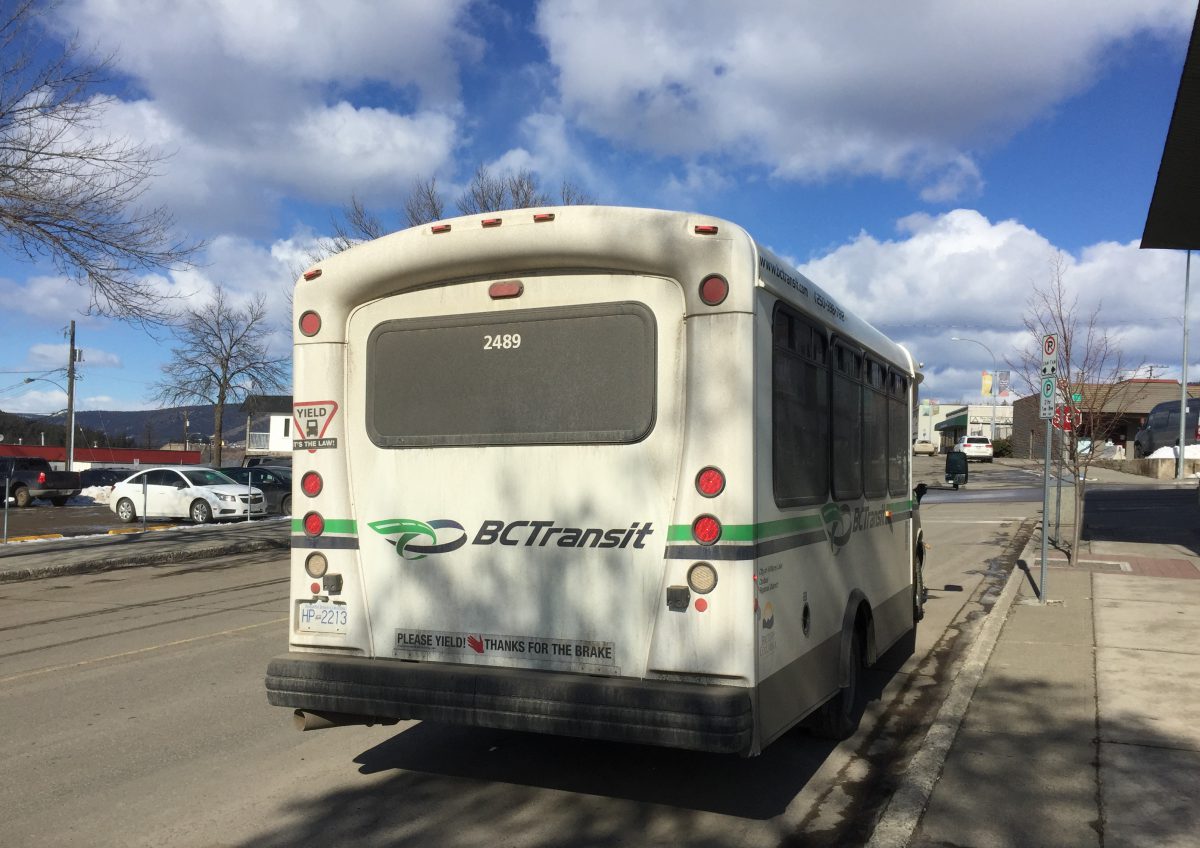It is rear door loading only for BC Transit customers.
The rollout in all BC Transit communities on Saturday follows the communities of Victoria and Nanaimo that were among the first communities to do so due to the COVID-19 pandemic.
“TransLink has implemented this as well in Metro Vancouver,” said communications manager, Jonathan Dyck.
“It’s something that the transit agencies have been working on all over North America and to try and identify the best route to go to support social distancing as we want to make sure that we’re doing our part in our communities as we continue to transport people with a solution that they can rely on.”
Dyck added they know that people are using the transit systems to get to work including healthcare facilities and to get to different areas such as grocery stores and pharmacies. He said it is a critical and important part and that they are working as hard as they can to continue doing so with the available resources they have.
“We know that we need to put the service on the road,” Dyck said. “It’s a critical and important part of a community and we’re working as hard as we can to continue doing so with the available resources that we have.”
Passengers can still load through the front door if they require the use of the ramp or other accessible features of the bus.
Customers will also not be required to pay fares in all BC Transit communities for 30 days for all systems including conventional, community, and handyDART.
Dyck said BC Transit is currently evaluating service on a day by day basis, and that there have been BC Transit communities that have had to reduce service or trips.
“I think right now you’re seeing everybody being respectful of the social distancing and I mean it is something that we’re going to have to get used to as time goes on with the rear door loading for the next 30 days,” he said. “What I’ve heard from communities that have already implemented it is that people get it really quickly, and we’ve had really great feedback from our drivers and the customers understand it as well because they’re trying to practice social distancing too.”
“The other thing is that we’re trying to communicate with customers what they can do to support social distancing on the bus,” Dyck added. “So that includes standing behind the red line on the bus, moving to open space on the bus if you feel like you need to and not being offended if somebody does move away, and checking the bus to see how full it might be and making a decision based on your own travel needs if you want to get on that bus or wait to see how full the next bus is. This also includes staying home if you are sick, and this keeps getting repeated by health professionals and I think it’s a really important point, and then practicing proper hand hygiene, and coughing or sneezing into your elbow or into a tissue.”




